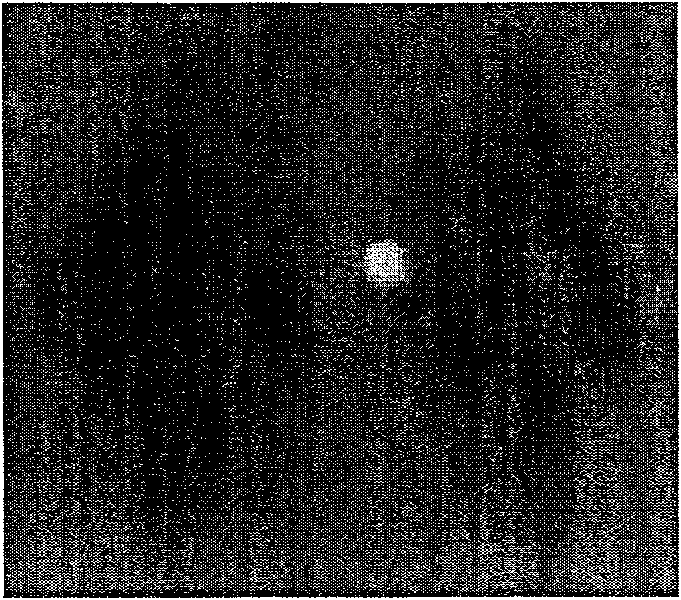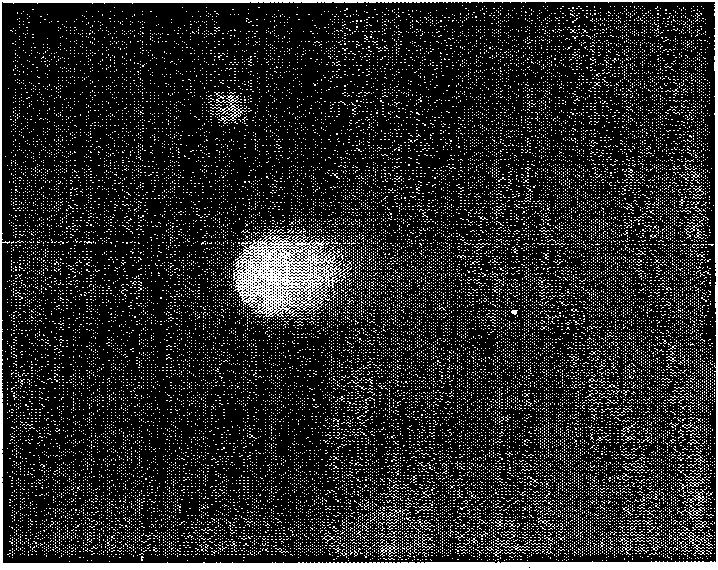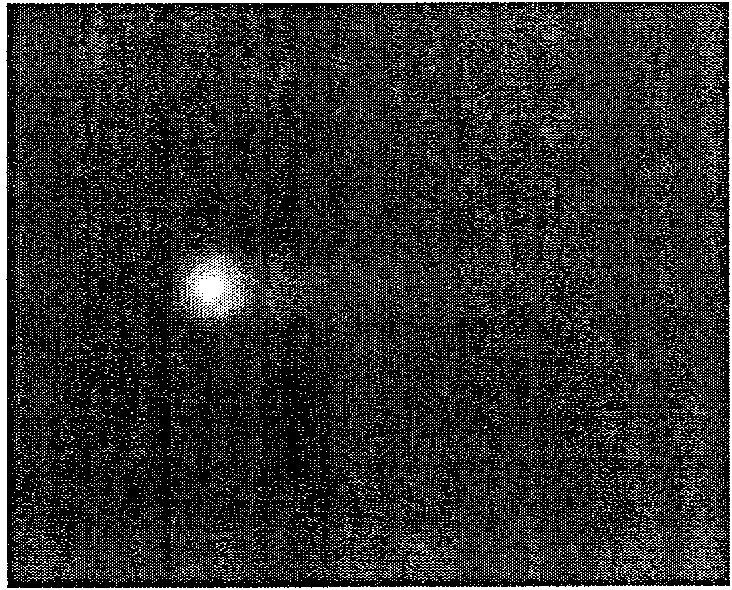Method for detecting laser caused DNA damage
A DNA damage detection method technology, applied in the field of laser biology, to achieve the effect of easy promotion, simple method and accurate detection results
- Summary
- Abstract
- Description
- Claims
- Application Information
AI Technical Summary
Problems solved by technology
Method used
Image
Examples
Embodiment 1
[0051] (1) Extraction of mouse splenocytes
[0052] A 4-week-old mouse was taken, killed by necking, and soaked in 75% alcohol for 10 minutes. Take out the spleen on a sterile operating table, peel off the fat tissue, and wash it with PBS buffer in a petri dish;
[0053] Place the cleaned mouse spleen on a 200-mesh stainless steel mesh and set it on a small beaker, cut the spleen into pieces with scissors, then grind the spleen with the piston core of the syringe, and wash the spleen with PBS buffer while grinding Tissue fragments, when the spleen tissue has basically been ground into a small beaker, remove the stainless steel mesh from the small beaker, pour the splenocyte suspension in the small beaker into a 10ml centrifuge tube, and wash the beaker 3 times with PBS buffer, Pour the cleaning solution into a centrifuge tube; centrifuge at 1200r / min for 6min, discard the supernatant, add 6ml of PBS buffer, blow off the cell pellet with a dropper to obtain a cell suspension; ce...
Embodiment 2
[0079] (1) Extraction of mouse splenocytes
[0080] A 3-week-old mouse was taken, killed by necking, and soaked in 75% alcohol for 5 minutes. Take out the spleen on a sterile operating table, peel off the fat tissue, and wash it with PBS buffer in a petri dish;
[0081] Place the cleaned mouse spleen on a 200-mesh stainless steel mesh and set it on a small beaker, cut the spleen into pieces with scissors, then grind the spleen with the piston core of the syringe, and wash the spleen with PBS buffer while grinding Tissue fragments, when the spleen tissue has basically been ground into a small beaker, remove the stainless steel mesh from the small beaker, pour the splenocyte suspension in the small beaker into a 10ml centrifuge tube, and wash the beaker 3 times with PBS buffer, Pour the cleaning solution into the centrifuge tube; centrifuge at 1000r / min for 8min, discard the supernatant, add 5ml of PBS buffer, blow off the cell pellet with a dropper to obtain a cell suspension;...
Embodiment 3
[0102] (1) Extraction of mouse splenocytes
[0103] A 6-week-old mouse was taken, killed by necking, and soaked in 75% alcohol for 15 minutes. Take out the spleen on a sterile operating table, peel off the fat tissue, and wash it with PBS buffer in a petri dish;
[0104] Place the cleaned mouse spleen on a 200-mesh stainless steel mesh and set it on a small beaker, cut the spleen into pieces with scissors, then grind the spleen with the piston core of the syringe, and wash the spleen with PBS buffer while grinding Tissue fragments, when the spleen tissue has basically been ground into a small beaker, remove the stainless steel mesh from the small beaker, pour the splenocyte suspension in the small beaker into a 10ml centrifuge tube, and wash the beaker 3 times with PBS buffer, Pour the cleaning solution into a centrifuge tube; centrifuge at 1500r / min for 5min, discard the supernatant, add 8ml of PBS buffer, blow off the cell pellet with a dropper to obtain a cell suspension; ...
PUM
 Login to View More
Login to View More Abstract
Description
Claims
Application Information
 Login to View More
Login to View More - R&D
- Intellectual Property
- Life Sciences
- Materials
- Tech Scout
- Unparalleled Data Quality
- Higher Quality Content
- 60% Fewer Hallucinations
Browse by: Latest US Patents, China's latest patents, Technical Efficacy Thesaurus, Application Domain, Technology Topic, Popular Technical Reports.
© 2025 PatSnap. All rights reserved.Legal|Privacy policy|Modern Slavery Act Transparency Statement|Sitemap|About US| Contact US: help@patsnap.com



